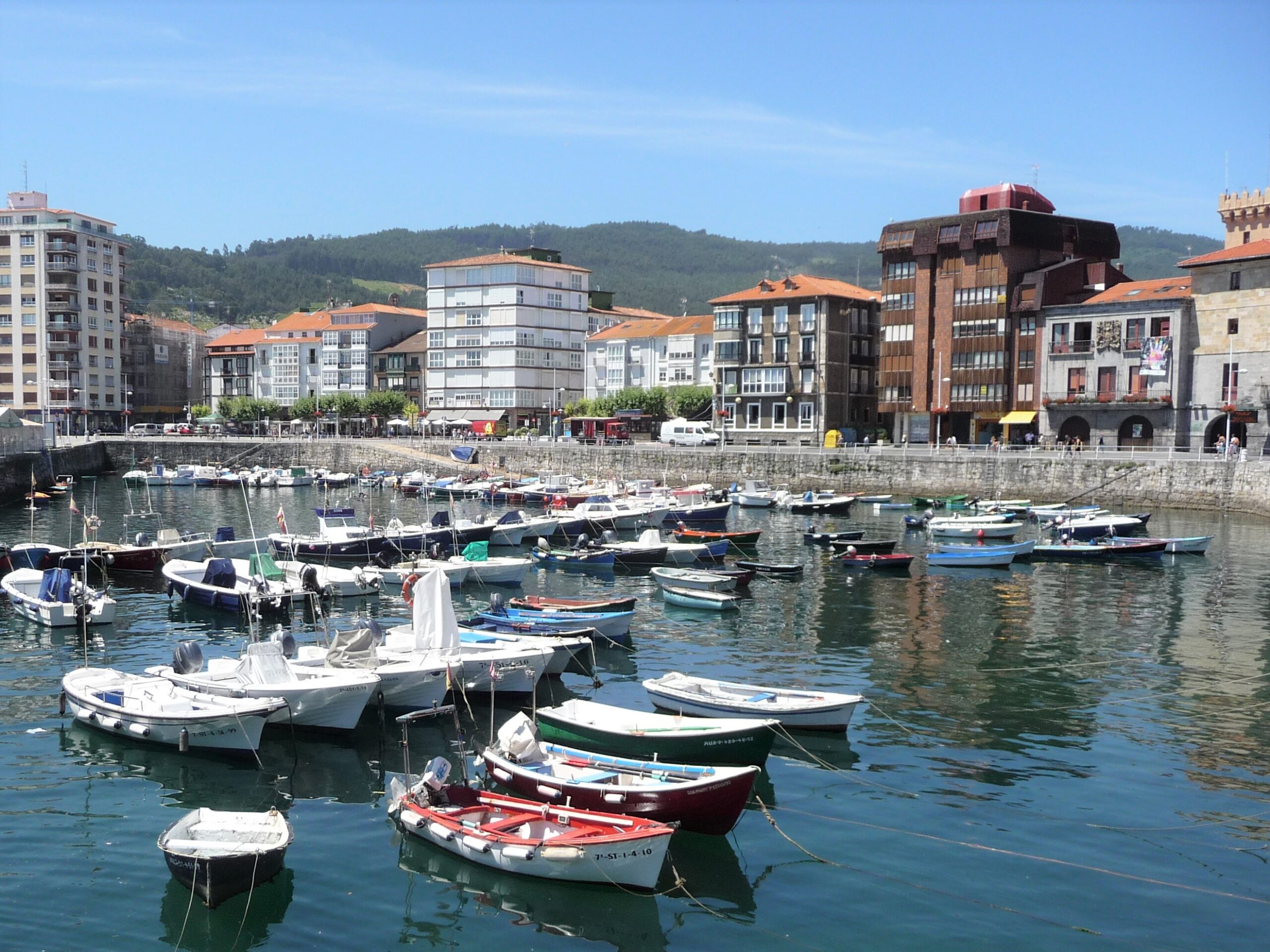
Coastal Gem for Surfing, Seafood, and Scenic Beauty
Nestled along the rugged northern coast of Spain, Santoña in Cantabria offers a captivating blend of natural beauty, rich history, and vibrant culture. Whether you’re an avid surfer, a culinary enthusiast, or a nature lover, this charming seaside town has something special to offer. Let’s embark on a detailed journey through Santoña, exploring its surf spots, culinary delights, historical landmarks, and more.
Surfing at Playa de Berria: A Surfer’s Paradise
Playa de Berria stands as one of the premier surf destinations in northern Spain. Stretching over 2 kilometers with fine golden sands, this beach offers consistent waves suitable for both beginners and seasoned surfers. The beach break provides both left and right-hand waves, making it ideal for various skill levels. While summer months may see calmer conditions, autumn brings powerful swells, attracting local surfers seeking thrilling rides. Several surf schools line the beach, offering lessons and equipment rentals, ensuring everyone can enjoy the surf experience.
Exploring Santoña: A Town Steeped in Tradition
Historical Landmarks
Santoña’s rich history is evident in its landmarks. The town’s fortifications, such as the Fuerte de San Martín, offer panoramic views of the bay and a glimpse into its military past. These structures, dating back to the 18th century, played pivotal roles in defending the region against maritime threats.
The Fishing Port
Santoña’s bustling fishing port is the heart of its maritime activities. Fishermen return daily with bountiful catches, including the town’s famed anchovies and tuna. The port area is lined with seafood restaurants where visitors can savor the freshest catches, often prepared in traditional Cantabrian styles.
Culinary Delights
The town boasts a plethora of bars and restaurants offering delectable local dishes. From tapas bars serving anchovy-stuffed olives to seafood paella, the culinary scene is a testament to Santoña’s maritime heritage. Don’t miss the opportunity to sample ‘rabas’ (fried squid), a beloved local snack.
Market Day
Every week, the town comes alive with its vibrant market day. Locals and visitors alike flock to the central square to purchase fresh produce, artisanal goods, and regional specialties. It’s an excellent opportunity to immerse yourself in the local culture and pick up unique souvenirs.
Stay at Hotel Juan de la Cosa: Comfort by the Sea
For a memorable stay, consider the Hotel Juan de la Cosa, a family-run establishment renowned for its hospitality and prime location. Situated just a short walk from Playa de Berria, the hotel offers rooms with stunning sea views. Guests can enjoy amenities like a heated indoor pool, whirlpool, and a restaurant serving fresh seafood and regional wines. The hotel’s proximity to the beach and the natural park makes it an ideal base for exploring the area.
Anchovies and Tuna: The Heart of Santoña’s Fishing Legacy
Santoña’s fishing industry is legendary, particularly for its anchovies and tuna. The town’s anchovies are considered some of the best in the world, thanks to traditional curing methods passed down through generations. Local producers meticulously prepare these fish, ensuring a delicate flavor and tender texture that has garnered international acclaim.
Tuna fishing also plays a significant role in the local economy. The town’s tuna fleet operates in the Bay of Biscay, bringing in prized catches that are processed and exported worldwide. Visitors can witness this thriving industry firsthand by touring local canneries or enjoying tuna dishes at waterfront restaurants.
Natural Wonders: The Marshes of Santoña
Behind Hotel Juan de la Cosa lies the Marismas de Santoña, Victoria y Joyel Natural Park, a vast wetland area recognized as one of the most important in northern Spain. This ecological haven is home to over 130 species of birds, including spoonbills, herons, and various waders. The park’s diverse ecosystems, ranging from mudflats to salt marshes, provide a sanctuary for migratory birds and a peaceful retreat for nature enthusiasts.
Sailing from Plymouth to Santander: A Comfortable Journey
Embarking on your Spanish adventure begins with a scenic ferry ride from Plymouth to Santander with Brittany Ferries. The journey offers comfortable accommodations, including twin inside cabins equipped with continental breakfast and hot drinks served in your cabin. While meals are available at an extra cost onboard, the experience provides a relaxing start to your holiday.
Absolutely! Let’s dive deeply into both Santander and Bilbao, two fascinating cities in northern Spain, each with its own distinct personality, culture, and geography. I’ll give you a comprehensive description covering history, geography, architecture, culture, economy, and local life.
Santander
Location & Geography:
Santander is the capital of the Cantabria region, located on the northern coast of Spain along the Bay of Biscay. It’s famous for its stunning coastline and natural harbor. The city is partially built on a peninsula, giving it an intimate connection with the sea. Its beaches, cliffs, and bays are a defining feature, and the surrounding landscape is lush and green due to Cantabria’s relatively high rainfall.
Climate:
Santander has an oceanic climate: mild summers, cool winters, and frequent rain. The climate ensures the region remains green year-round, and the Atlantic winds bring a refreshing breeze, especially along the coast.
History:
Historically, Santander has been an important port city. It rose in prominence in the 19th century as a commercial and tourist hub, particularly for wealthy Spanish elites who built summer residences along its shores. The city’s architecture reflects its prosperous past, with elegant 19th- and early 20th-century buildings. A major fire in 1941 destroyed much of the historic center, which led to significant reconstruction.
Architecture & Urban Layout:
- El Sardinero: The most famous beach area, lined with elegant hotels and casinos from the Belle Époque era.
- Palacio de la Magdalena: A stunning royal palace overlooking the sea, built in the early 20th century as a summer residence for the Spanish royal family.
- Modernist buildings and promenades: The city blends old grandeur with modern infrastructure, especially along the waterfront.
- The city center combines narrow streets and plazas, featuring vibrant cafes and shops.
Culture & Attractions:
- Santander is known for its maritime culture, seafood cuisine, and sailing.
- Centro Botín: A contemporary art center designed by Renzo Piano, located on the waterfront, is a highlight of modern Santander.
- Museums: Museo Marítimo del Cantábrico (Maritime Museum) and Museo de Prehistoria y Arqueología de Cantabria reflect local heritage.
- Festivals and events often revolve around the sea, music, and regional traditions.
Economy:
Traditionally based on shipping, fishing, and trade, Santander is also a financial hub today, hosting the headquarters of Banco Santander. Tourism is crucial, driven by beaches, culture, and gastronomy.
Lifestyle:
Life in Santander is relaxed and outdoorsy. People enjoy walking along the bay, visiting beaches, or taking trips to the nearby Cantabrian countryside. Cafes and seafood restaurants are central to social life.
Bilbao
Location & Geography:
Bilbao is the largest city in the Basque Country, located inland along the Nervión River, which flows into the Bay of Biscay. The surrounding area is mountainous, giving Bilbao dramatic natural vistas. Unlike Santander’s coastal charm, Bilbao blends industrial heritage with urban sophistication.
Climate:
Bilbao has a maritime climate similar to Santander—mild temperatures and abundant rainfall. Foggy mornings and green hills are common, giving the city a fresh, verdant atmosphere.
History:
Bilbao’s origins go back to the 14th century, built as a fortified town on the riverbanks. Historically, it grew as a commercial port and industrial center, thriving on iron, shipbuilding, and trade. In the late 20th century, Bilbao underwent a major transformation, reinventing itself as a cultural and service-oriented city after industrial decline.
Architecture & Urban Layout:
- Guggenheim Museum Bilbao: Frank Gehry’s iconic titanium-clad building transformed the city into an international cultural landmark.
- Casco Viejo (Old Town): Narrow, medieval streets with vibrant bars, shops, and plazas, showcasing traditional Basque architecture.
- Zubizuri Bridge and Isozaki Towers: Examples of modern urban design, symbolizing Bilbao’s blend of old and new.
- Industrial heritage: Old shipyards, factories, and warehouses have been repurposed for cultural and commercial use.
Culture & Attractions:
- Bilbao is deeply Basque in identity, with strong language, cuisine, and traditions.
- Culinary culture is celebrated worldwide; pintxos (Basque tapas) and fine dining are a cornerstone of life here.
- Festivals like Aste Nagusia (Great Week) showcase Basque music, dance, and tradition.
- The city’s riverfront has been revitalized with parks, promenades, and public art.
Economy:
Once an industrial powerhouse, Bilbao’s economy is now driven by services, finance, tourism, and technology. The Guggenheim effect brought global attention and boosted cultural tourism. The port and logistics remain important.
Lifestyle:
Bilbao combines urban energy with a connection to nature. Locals often hike in nearby mountains, enjoy river walks, or dine in bustling pintxos bars. The city balances a strong sense of Basque identity with cosmopolitan modernity.

